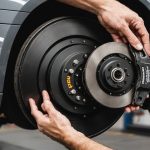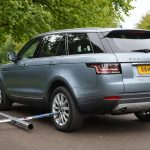Foggy conditions in the UK present unique challenges for drivers, especially when it comes to visibility. Properly aligned headlights play a vital role in ensuring safe navigation through these low-visibility environments. Misalignment can lead to ineffective illumination, further complicating driving. This guide explores techniques for mastering headlight alignment, helping you maintain optimal visibility and enhance road safety during those murky drives. Discover practical tips to ensure your headlights shine bright when it matters most.
Importance of Proper Headlight Alignment
Proper headlight alignment is crucial for ensuring headlight safety and enhancing visibility, especially in challenging conditions such as fog. Misaligned headlights can significantly impair a driver's ability to see the road clearly, increasing the risk of accidents. In foggy weather, which is common in UK driving conditions, the role of correctly aligned headlights becomes even more vital.
Also to discover : Unlock great deals on certified used cars in West Island
Enhancing Visibility
Headlights that are properly aligned project light evenly across the road, illuminating potential hazards and ensuring that other drivers can see your vehicle. This is particularly important in fog, where visibility is already compromised. Misaligned headlights may either point too high, causing glare, or too low, reducing the effective illumination of the road.
Impact on Driving Safety
In foggy conditions, the diffused light from misaligned headlights can create a wall of light that reflects off the fog, further reducing visibility. This can make it difficult to judge distances and see road signs or obstacles. Proper alignment ensures that the beam cuts through the fog more effectively, improving safety for everyone on the road.
Also to discover : How does the congestion charge in London affect drivers?
Challenges in the UK
The UK often experiences dense fog, especially in rural areas. Drivers must ensure their headlights are correctly aligned to navigate these conditions safely. Regular maintenance and checks can help prevent the risks associated with misaligned headlights, contributing to safer driving experiences.
Step-by-Step Guide to Headlight Alignment
Aligning your headlights correctly is a crucial part of vehicle maintenance. It ensures optimal visibility and safety on the road. This guide will walk you through the headlight alignment process, making it easy for you to perform a DIY headlight adjustment.
Tools Required for Alignment
Before starting, gather the necessary tools. You'll need:
- A measuring tape
- Screwdriver or alignment wrench (specific to your vehicle)
- Masking tape
- A flat, level surface for your vehicle
These tools will help you make precise adjustments, ensuring your headlights are positioned correctly.
Pre-Alignment Checks
Before adjusting, inspect the condition of your headlights. Ensure they're clean and free of obstructions. Check the tyre pressure and ensure your vehicle is on a level surface. This pre-alignment check is essential to avoid skewed results.
Step-by-Step Alignment Instructions
- Park your vehicle on a level surface facing a wall, about 10-15 feet away.
- Use masking tape to mark the center of each headlight beam on the wall.
- Measure the height from the ground to the center of your headlight and ensure the tape marks match this height.
- Adjust the headlights using the screwdriver or alignment wrench, aligning the beams with the tape marks on the wall.
Following these steps will ensure your headlights are properly aligned, enhancing safety and visibility.
Tips for Optimal Visibility in Foggy Conditions
Navigating through fog requires specific fog driving tips to ensure safety and visibility. One of the primary safe driving practices is to use your headlights correctly. Always use low beams or fog lights instead of high beams, as high beams can reflect off the fog and reduce visibility further.
Best Practices for Using Headlights in Fog
- Utilise fog lights if your vehicle is equipped with them. These are designed to cut through fog without causing glare.
- Keep headlights clean and free from dirt or moisture to maintain optimal light output.
- Regularly check and adjust headlight alignment to ensure the beam is effective in foggy conditions.
Recommended Headlight Types for Improved Visibility
Consider using halogen or LED headlights, as they offer better clarity and brightness. LED headlights are particularly effective in penetrating fog, providing a clearer view of the road ahead.
Additional Driving Techniques for Foggy Weather
- Reduce speed and increase following distance to allow more time to react to potential hazards.
- Use the road’s edge as a guide, especially if visibility is severely limited.
- Avoid sudden movements and keep a steady pace to maintain control of the vehicle.
Incorporating these headlight usage strategies and driving techniques can significantly enhance safety in foggy conditions.
UK Regulations on Vehicle Lighting
Navigating the intricacies of UK Driving Laws can be daunting, especially when it comes to Vehicle Lighting Regulations. Ensuring Headlight Compliance is not just about safety but also adhering to legal standards.
Legal Requirements for Headlights
In the UK, headlights must be aligned correctly and should not exceed specific brightness levels. The regulations stipulate that headlights must illuminate the road without causing glare to other drivers. Compliance ensures that your vehicle's lighting system is both safe and legal, reducing the risk of accidents and penalties.
Consequences of Non-Compliance
Failure to adhere to Vehicle Lighting Regulations can lead to fines and potential points on your driving license. Non-compliance not only jeopardises your safety but also that of other road users. It's crucial to regularly check your headlights for proper alignment and brightness to avoid these penalties.
Resources for Staying Informed
Staying updated with UK Driving Laws is essential. The Driver and Vehicle Standards Agency (DVSA) provides resources and guidelines on vehicle lighting. Regularly consulting these resources can help ensure your vehicle remains compliant. Additionally, vehicle manuals and local garages can offer insights into maintaining headlight compliance.
Common Headlight Issues and Troubleshooting
Headlight problems can often be a source of frustration, but a clear troubleshooting guide can help resolve many issues. Identifying common headlight alignment issues is the first step in ensuring your vehicle's headlights are functioning correctly. Misalignment is a frequent problem, often caused by bumps in the road or improper installation. Signs of misalignment include uneven light distribution or headlights pointing too high or low.
Tips for Troubleshooting Misaligned Headlights
- Check the alignment using a flat surface and a wall to project your headlight beams. This helps determine if the beams are uneven.
- Inspect the headlight housing for any damage or looseness, which could affect alignment.
- Use a maintenance guide to adjust the alignment screws on your headlights, ensuring the beams are level and correctly positioned.
If these steps do not resolve the issue, it might be time to seek professional help. Persistent headlight problems, such as flickering or dim lights, may indicate electrical issues that require expert attention. Regular maintenance tips, like cleaning headlights and checking connections, can prevent many common problems and keep your headlights in optimal condition.
Enhancing Understanding Through Visual Aids
Visual aids are powerful tools for improving comprehension, especially when it comes to headlight alignment. They transform complex instructions into accessible formats, making the learning process more straightforward.
Infographics on Headlight Alignment
Headlight Alignment Infographics are valuable for simplifying the alignment process. These visual guides break down each step, offering clear illustrations that depict the correct positioning of headlights. By using infographics, users can quickly grasp the necessary adjustments without sifting through lengthy text.
Video Tutorials for DIY Alignment
Educational Videos provide dynamic, step-by-step instructions for those tackling headlight alignment themselves. These videos often feature real-time demonstrations, allowing viewers to see the exact tools and techniques required. This visual guidance can be especially beneficial for visual learners, offering a more engaging alternative to traditional manuals.
Interactive Tools for Learning
Visual Guides and interactive tools further enhance understanding by allowing users to engage directly with the content. These tools often include virtual simulations or quizzes that reinforce learning. By exploring these resources, users can gain hands-on experience in a risk-free environment, building confidence in their ability to perform headlight adjustments effectively.
















